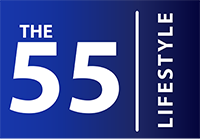For men 50 and over who have spent a considerable amount of time training, we know from experience that switching up your workouts is extremely beneficial to keep from plateauing. A lot of trainers already incorporate multiple facets of exercise programs such as cardio and resistance training in HIIT lineups. A particular training system I’ve incorporated into my workouts is Pilates and similar movements. If you haven’t tried it or need more information about how to get started, check out our team PT, Eugenie’s, write up on – A Beginner’s Guide to Pilates for Men 50 and Over.
Pilates – Some Background


Pilates might not be a typical exercise method for many men, but it’s a highly beneficial regimen, especially for men over 50. Granted, most instructors will tell you that 90-100% of the participants in their classes are women. Ironically enough, the Pilates method was created by a man. And no, not a weakling. Joseph Pilates was a skilled gymnast, self-defense expert, and skier. Initially, 60% of his clients, who followed his training method, were men.
He first started developing his technique when he trained German nationals in the First World War and later used his method for rehabilitating injured soldiers in a hospital on the Isle of Man. After the war, he moved to New York to open a body conditioning studio with his wife. This is also when he genuinely started laying down the fundamental principles of the Pilates training method we see today.
What is Pilates?
Pilates is a form of low-impact exercise strengthening and toning muscles while also improving flexibility and posture. Further, although the method targets the entire body, it’s well-known for its incredible impact on the core. The movements in Pilates are always slow, precise, and breath control. You can also practice Pilates with or without equipment. The 6 essential principles in Pilates include:
- Breath
- Concentration
- Centering
- Control
- Precision
- Flow
Common Misconceptions on Pilates
It Looks too easy – The small pulses and movements seem easy and straightforward – but it’s not enough to build strong muscles, right? Wrong. If you have ever attended a Pilates class, you will know it is not a walk in the park at all.
The misconception of using weights to strengthen your muscles – Even though weight plays an essential role in strengthening your muscles, other forms of exercise can also strengthen muscles. Pilates aims to emphasize your stabilizer muscles, which creates a crucial foundation for surrounding muscles to support. Without strong stabilizers, you won’t be able to build strong shoulders, biceps, or quads.
Need Pilates equipment? Click the image or click here to access our store.
6 Benefits of Pilates for men over 50
1. Building global strength
Because Pilates focuses on control, precision, and flow, it always aims to target both sides of the body equally. The movements essentially targets every body part preventing muscle imbalances. It’s also often easy to neglect essential muscles when lifting weights, while Pilates covers it all.
2. Increasing flexibility
It comes with no surprise that men are generally less flexible compared to women. And even though the first few sessions might feel awkward due to insufficient flexibility – it gets easier, and most men feel an immediate improvement in their day-to-day functional abilities.
3. Prevent and rehabilitate injuries
The 3rd benefit fits in with the first two mentioned above. Improving overall strength and flexibility is proven to reduce your risk of injuries by reducing muscle imbalances. Pilates also utilize exercises in all planes of movement, preventing awkward postures and tight muscles.
4. Improves posture
Improved spinal flexibility and a strong core both contribute to better posture. Furthermore, Pilates also teaches you new movement patterns to facilitate proper alignment.
5. Relieve back pain
If you’ve ever suffered from back pain, your physical therapist most properly told you your core is not strong enough. Even though you know, you can perform 20 sit-ups and used to have a six-pack. Well, unfortunately, that doesn’t account for a strong core. You need to strengthen your entire core to provide stability to your spine and, in turn, relieve pressure and pain. Pilates does this by strengthening all parts of your core, including your obliques, transverse abdominis, pelvic floor, diaphragm, and the famous ‘six-pack’ muscle.
6. Reduces stress and improves mental health
Pilates is a great way to relieve stress, and one of the main reasons is the incorporation of controlled and synchronized breathing patterns with movements. The controlled deep breaths help the brain calm down and relax. It also lowers blood pressure and your heart rate, which is often elevated during periods of stress.
3 Tips to Start Pilates
1. Attend a few beginner’s classes.
Attending classes is the fastest way to learn this new method of exercise. This way, you learn the different ‘lingo’ they use in Pilates and the proper breathing pattern for all the different exercises. The instructor will also always correct your technique by providing hands-on facilitation to ensure you use the appropriate technique and prevent injuries or ineffective movement patterns.
2. If possible, inform your instructor of any aches or pains you have.
If you know of any previous or current injuries or sore spots, it’s crucial always to inform your instructor before the class starts. This helps them to modify specific exercises for you as they guide you through the session. Furthermore, learn to stop or ask for a modification if any movement feels painful as you progress through the session. Remember, you’re the only person who genuinely knows how your body feels. Therefore, you need to communicate if something doesn’t feel right. Certain movements might feel uncomfortable but should never be painful.
3. Be patient with your body
Like with learning any new skill, it’s important to allow your body to adapt. At first, the movements might feel extremely awkward, but as your body becomes more flexible and used to the types of muscle contraction, it gets easier. Listen to your body and ensure that the sessions are challenging AND physically and mentally supportive.
Final Thoughts on A Beginner’s Guide to Pilates for Men 50 and Over.
Pilates is a fantastic way to mix up your workouts with low impact exercise and full body stretching. If you haven’t tried it yet, give it a go and experience the benefits for yourself! It will be worth it, even if you only experience one of the benefits mentioned above.
We hope the information in our piece – A Beginner’s Guide to Pilates for Men 50 and Over, can help you with an informed decision on your workout regimens. If you want to continue further reading on home-based exercises that promote low impact lifestyles, check out our blogs on resistance band training and other cardio exercises.
As always, if you need something you can’t find here, reach out to us through the Contact page or leave a comment below. Please use our approved affiliate links to explore the options available to you, we appreciate you support!


Eugenie Lamprecht is a Physical Therapist and Pilates Instructor with a great passion for helping others live a healthy and holistic life. She has clinical experience working in various areas of healthcare, such as intensive care units, as well as orthopedic, neurological, and sports facilities.
When she’s not seeing clients, she’s a freelance writer for health & wellness websites and brands. You can see more of her work at https://santoshasisters.com/ and her portfolio at https://eugenie.contently.com/.
The 55 Lifestyle is a participant in the Amazon Services LLC Associates Program, an affiliate advertising program designed to provide a means for sites to earn advertising fees by advertising and linking to Amazon.com.











It was really impressive when you stated that back pain and posture can be improved by pilates. These are two things I really need to work on, and I feel like just relying on behavioral changes won’t be enough. I’ll definitely look for any exercise classes that teach pilates right away.